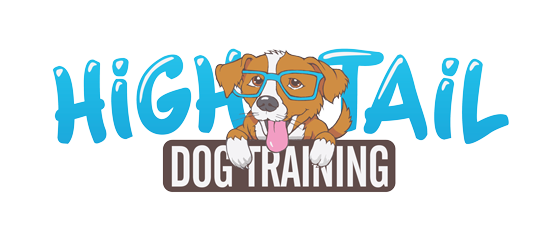Commonly we attribute our human methodology of learning new skills to our beloved canine companions with mixed or disappointing results. Dogs lack most if not all our human reasoning skills and rely more on their perception of our voice tone and body language than the words we say. Dogs are relatively simple. From a young age they learn appropriate behavior from their mothers in a simple, basic system of unacceptable behavior “feels bad” and acceptable behavior “feels good”. If a pup is too aggressive with the mother, she will growl and bite the pup to put it in its place. When the pup is compliant, she will nuzzle, lick, and play with it. For this reason, it is difficult to understand why distracting a misbehaving pup with treats would be an effective training technique?
Dogs for the most part learn in a one step, basic manner. They do not usually think about or anticipate too far into the future. They are present, living in the here and now. Nor do they remember well what went wrong a few minutes ago. As a trainer it is important to praise or correct the dog immediately after the act, not several moments later when they will have a difficult time associating the praise or correction to what they have done. If we are going to take advantage of a dog’s natural “feels good/feels bad” method of learning we want to reward the dog for the desired behavior with a verbal “good dog” in an uplifting tone, a pet on the head or a treat. Not all dogs respond to the various methods of reward in the same way so experiment with what works best for your dog and mix it up.
Corrections must have the opposite effect or be perceived as feeling bad to the dog. Appropriate corrections and the methods of correction you use in training will vary greatly from dog to dog. In a very timid dog, a strong “no” or slight jerk of the leash may be all that is needed. With other dogs a greater degree of forcefulness is needed. It is this type of dog that is the most problematic for owners trying to correct bad behavior and elicit the desired good behavior in their dog. If the level of force used in correcting the dog is not effective, the level of force needs to be increased until the dog experiences the degree of unpleasantness that would cause him to stop the undesired behavior. There are many ways to accomplish this including a stern voice tone, dominating body language, physical means and electronic stimulation. All dogs react differently, and this is where a professional trainer can help by evaluating your dog’s behavior and help you to gain authority and take control of your dog in a positive and humane manner.
Dogs learn by repetition. When you are consistent and practice a skill several times, over several sessions they learn how to execute the move. For example, to teach sit command, you would pull up on the leash, push down on the dog’s butt while verbally commanding “sit”, praising the dog for assuming the sit position. Eventually pulling up on the leash and pushing the butt down should not be necessary and the dog would respond to the voice command alone.
By far the greatest tool in our training arsenal is our “Voice”. Dogs are very sensitive to your tone of voice and inflections. Your voice tone and volume matter, as does your body language when you give commands. Dogs will stop their forward motion toward you when you move toward them in an authoritative, imposing manner. Likewise, they will come to you better if you are upright and move backwards slightly or are down on your knees at their level in an inviting manner.
Dogs respond best to single word, clear commands rather than a sentence or multiple words. Commanding “Down” is easier for the dog to learn than “Lie Down”. Decide on the words you will use, be consistent and keep it simple. Stick to the basic obedience commands of Heel, Sit, Stay, Down, Come and No to begin with. You can add “Place” for the dog to go to a place and stay there or “Kennel” to go into the car or a kennel crate.
In summary, dogs learn by repetition, their thought processes are simple/one step. Dogs live in the present and do not usually reason. Praise and corrections should be immediate. The amount of pressure of a correction must be sufficient to cause a behavior change. Take advantage of their natural way of learning: desirable behavior – feels good and undesirable behavior – feels bad. Be sure to offer praise and encouragement to keep your dog engaged. Your most effective training tools are your voice tone and body language. Use simple one-word commands. Have fun and most importantly be sure your dog enjoys your training sessions together. Keep it short and be sure to quit while you are ahead.
By: Debra Folsom


